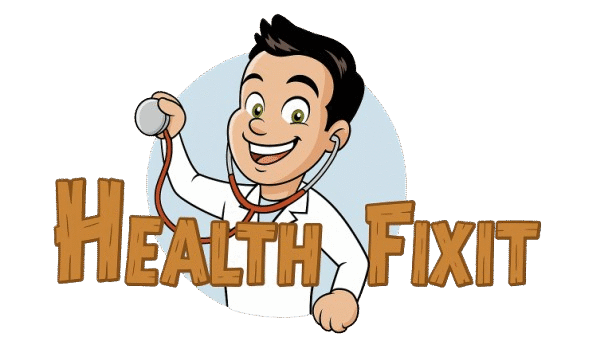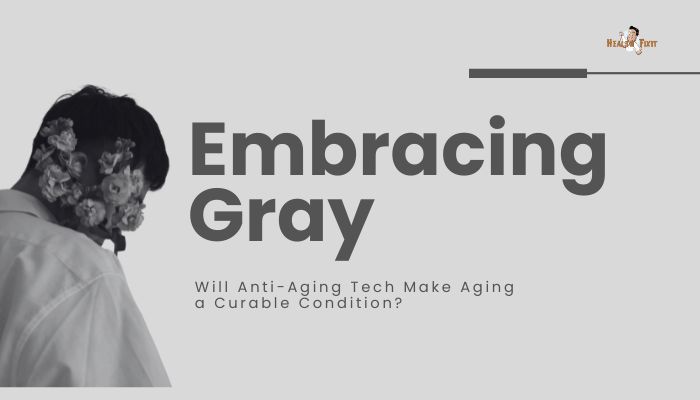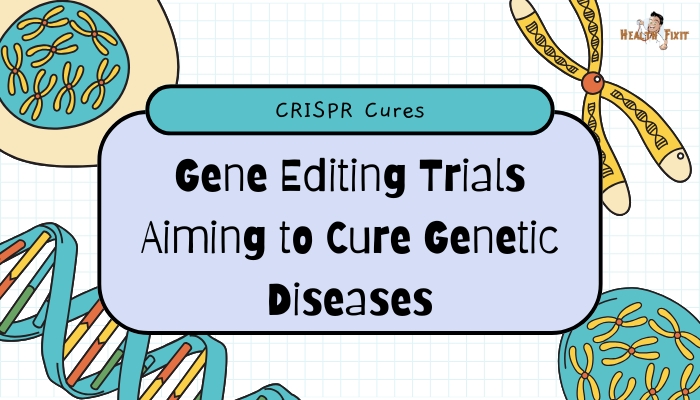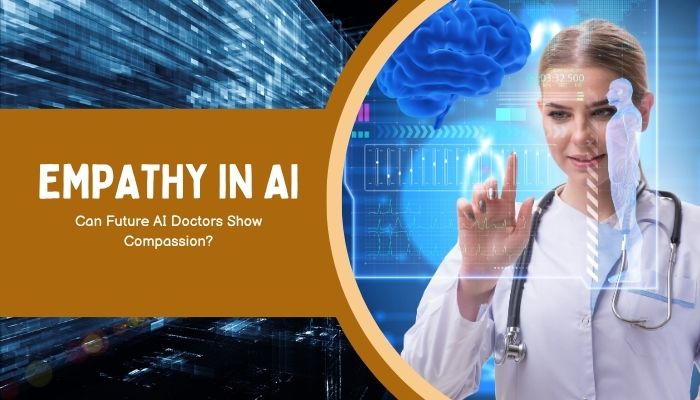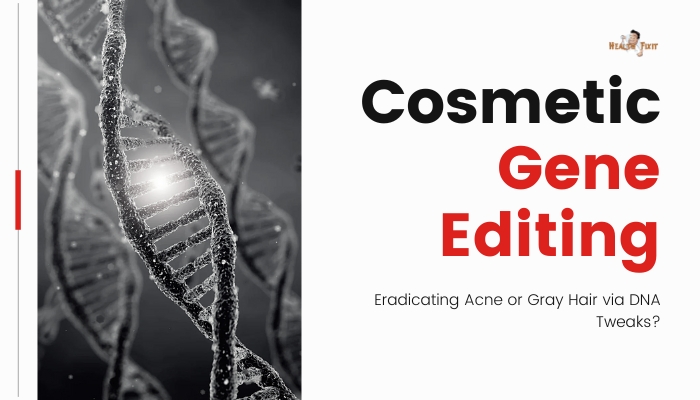Introduction
Aging has long been seen as inevitable—a gradual decline of cells and tissues that leads to frailty, disease, and ultimately death.
But recent scientific advances in areas like senolytic drugs, telomere extension, and epigenetic reprogramming are shaking up that assumption
. Could we one day treat aging like any other condition, slowing or even reversing its progression? While the idea of “curing”
aging remains controversial—and deeply intertwined with ethical, social, and economic implications—the accelerating pace of longevity research suggests it’s no longer mere science fiction
. This article investigates the cutting edge of anti-aging tech, the feasibility of significantly extending healthspans, and the dilemmas such interventions might cause.
The Biology of Aging
Hallmarks of Aging
Researchers have identified core processes that drive aging, often called the “hallmarks of aging,” which include:
- Genomic Instability: Accumulated DNA damage over time.
- Telomere Shortening: Chromosome ends degrade with cell divisions.
- Cellular Senescence: Old or damaged cells that no longer divide but release inflammatory signals.
- Loss of Proteostasis: Protein misfolding or aggregation.
Addressing these processes underpins current anti-aging strategies.
Why Aging Matters
As lifespan extends globally, more people face age-related diseases—cancer, Alzheimer’s, heart disease.
Slowing aging could simultaneously postpone multiple chronic conditions, reducing healthcare burdens and raising quality of life. The pursuit is not about immortality per se, but about healthier, more active years.
Emerging Anti-Aging Technologies
Senolytic Drugs
Senolytics target senescent cells—the “zombie” cells that linger, secreting harmful substances.
By clearing these cells, or modulating their secretions, animal studies have shown improvements in physical function, lowered inflammation, and extended healthspan. Early human trials are ongoing, with preliminary hints at reduced frailty or better organ function.
Telomere Therapies
Telomeres, the protective caps on chromosomes, shorten each time cells divide. Telomerase is an enzyme that rebuilds them
. Some labs investigate gene therapies or small molecules to boost telomerase in certain tissues, aiming to rejuvenate cells and maintain their replicative potential without triggering cancerous growth.
Epigenetic Reprogramming
From the “Yamanaka factors” used to create induced pluripotent stem cells, we’ve learned that partial reprogramming might roll back some cellular “age marks”
without fully resetting identity. Animal models show partial reprogramming can restore vision in old mice, for instance. If refined, epigenetic reprogramming may systematically refresh tissues while preserving their function.
Gene Editing and Aging
CRISPR and Genomic Stability
Genetic mutations accumulate with age; CRISPR-based editing might rectify high-impact ones. Alternatively, it could knock out pro-aging genes or restore protective gene variants (like some that extend longevity in centenarian studies)
. However, gene editing in older individuals carries complexity—immune responses, mosaic corrections, and ethical lines around germline vs. somatic editing.
Polygene Complexities
Aging is polygenic—thousands of genes and pathways. Pinpointing the “magic bullet” is unlikely. A combination of gene editing, senolytics, and metabolic interventions could be required to meaningfully slow or reverse aging processes.
The Reality Check
Overcoming Multisystem Decline
Even if we fix cells at a molecular level, organs might degrade from mechanical wear, immunosenescence
, or other factors. Aging is multifaceted—no single therapy addresses all complexities. We may see partial solutions that yield incremental improvements rather than a grand cure.
Safety and Long-Term Data
Intervening in fundamental processes (like reprogramming or telomerase activation) risks side effects—like increased tumorigenesis.
Thorough long-term trials are essential. We simply lack decades of data to confirm that anti-aging interventions are net beneficial without causing unanticipated harm.
Societal and Ethical Dilemmas
If aging becomes “treatable,” do we further entrench inequalities as wealthy individuals access these therapies first? How do we manage population expansion if more people live significantly longer? Will cultural norms around retirement or generational turnover shift drastically? These questions loom large.
Potential Health Benefits
Extending Healthspan
The main goal is often healthspan—the years one can live free of significant disease or disability. Even modest success in postponing age-related decline can reduce healthcare costs and enable seniors to remain active, contributing to society longer.
Reducing Multiple Age-Related Diseases
If the root aging processes are slowed, conditions like type 2 diabetes, osteoarthritis, and neurodegeneration might appear years later or with milder severity. That shift transforms how we handle elder care, possibly freeing resources for other medical needs.
Quality of Life Gains
Beyond lifespan, the vantage is improving vigor, mental acuity, and overall well-being in older years. Freed from the heavy burden of chronic ailments, many might remain socially and professionally engaged, rewriting the concept of “old age.”
The Future of Anti-Aging
Combination Therapies
Just as cancer treatment frequently uses multiple drugs, the next wave of anti-aging regimens could combine senolytics, gene editing,
NAD+ boosters, or dietary mimetics. Each therapy addresses distinct facets of aging. The synergy might yield bigger leaps than single interventions.
Personalized Aging Medicine
Genetic or epigenetic tests plus biomarkers of aging (DNA methylation clocks, telomere length, etc.) might identify individual “aging profiles.”
Doctors customize treatments—for instance, someone with high inflammatory burden might benefit from advanced immunomodulators, while another with short telomeres might get telomerase-based therapy.
Regulatory Acceptance
Agencies historically treat each disease separately. But aging is not an official disease category, complicating approvals for “geroscience” interventions. Increased recognition of aging as a treatable entity might shift policy, fueling drug development for “anti-aging” claims.
Practical Steps for Those Interested
- Focus on Established Interventions: While waiting for future breakthroughs, known “healthy aging” strategies—exercise, balanced diet, stress reduction—remain crucial.
- Monitor Clinical Trials: Human trials on senolytics or epigenetic therapies are sporadic; watch reputable sources for results and potential availability.
- Guard Against Hype: Many “anti-aging” products are unproven. Seek evidence-based solutions, consult experts in gerontology or longevity medicine.
- Holistic Approach: Even if advanced therapies arrive, synergy with lifestyle medicine (sleep, mental well-being) still matters for comprehensive health outcomes.
Conclusion
Anti-aging science is rapidly evolving, from senolytic drug cocktails to advanced gene editing that might slow or reverse aspects of biological decline
. While breakthroughs in the lab spark excitement—raising the possibility of a future where aging is a manageable “condition”—major hurdles remain.
Biological complexity, long-term safety, ethical equity, and social consequences must be addressed. Nonetheless, incremental progress is real
offering glimpses of a future in which living longer doesn’t just mean adding years, but also preserving vitality and independence. Whether we truly “cure” aging or simply mitigate its toll, the emerging field could transform how humanity experiences older adulthood.
References
- López-Otín C, et al. The hallmarks of aging. Cell. 2013;153(6):1194–1217.
- Childs BG, Durik M, Baker DJ, van Deursen JM. Cellular senescence in aging and age-related disease. Nat Rev Genet. 2015;16(5):293–305.
- Ovadya Y, Krizhanovsky V. Strategies targeting cellular senescence. J Clin Invest. 2019;129(2): 1463–1475.
- Liu GH, et al. Epigenetic reprogramming in aging and disease. Annu Rev Pathol. 2012;7:327–358.
- de Grey A, Rae M. Ending Aging: The Rejuvenation Breakthroughs That Could Reverse Human Aging in Our Lifetime. St. Martin’s Press; 2008.
- Gorbunova V, Seluanov A, Kennedy BK. The world goes Senolytic. Aging Cell. 2020;19(10):e13282.
- Kennedy BK, et al. Geroscience: linking aging to chronic disease. Cell. 2014;159(4):709–713.
- Slack JMW. Essential Developmental Biology. 3rd ed. Wiley-Blackwell; 2013. (On cellular reprogramming)
- Kirkwood TB. Understanding the odd science of aging. Cell. 2005;120(4):437–447.
- Partridge L, et al. Geroscience approaches to extending healthspan. Science. 2020;369(6502):270–271.
